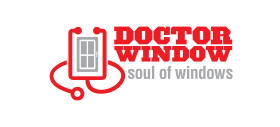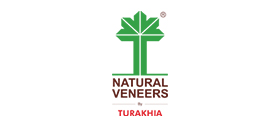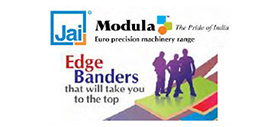Rehau has designs on growing edge band market
Rehau is stepping up the ante in its polymer solutions business and the edge band market in the country. In an interaction with Dhananjay Sardeshpande, Rehau India’s Managing Director, Faiz Ahmed, tells us more…

What is the significance of Rehau’s new edge band design centre in Vadodara? What signals should the furniture industry be reading?
The new edge band design centre in Vadodara is a game-changer for us at Rehau and for the entire furniture industry in India. This facility is more than just a production unit. We perceive it as a hub of innovation.
We’re bringing cutting-edge technology and our renowned German engineering to Vadodara, which means we can push the boundaries of what’s possible with edge bands. For the furniture industry, this signals a shift towards higher quality, more durable, and aesthetically superior products.
Our uPVC edge bands, known for their unmatched durability, moisture and scratch resistance, are set to become even better with the advanced capabilities of this new centre. We’re talking about enhanced production processes, improved finishing, and a greater variety of designs and colours.
This is a clear message to the market – we’re here to set new standards and help furniture manufacturers create pieces that are not only beautiful but also built to last.
Why the shift from Rajgurunagar (near Pune) to Vadodara?
The move from Rajgurunagar to Vadodara was a strategic one. Vadodara offers several logistical advantages, including better connectivity to major industrial hubs and ports, which streamlines our supply chain and distribution network.
Additionally, the region has a robust industrial ecosystem and access to a skilled workforce, which are crucial for our operations. By relocating to Vadodara, we’re positioning ourselves to take full advantage of these benefits, upscale our operational efficiency, and better serve our customers across India.
This move is part of our long-term strategy to ensure sustainable growth and maintain our leadership position in the market.
What are the attributes of a good edge band/ tape?
A high-quality edge band or tape needs to tick several boxes. It should be resistant to termites, ensuring the core material remains protected from infestation. Moisture resistance is crucial to prevent warping and damage, especially in humid environments. And scratch resistance is essential for maintaining a clear appearance despite regular use.
Durability is key, ensuring the edge band lasts as long as the furniture itself. Sustainability is also increasingly important, with both consumers and manufacturers looking for environmentally friendly options. At Rehau, our edge bands are designed to meet these criteria, offering a blend of functionality, durability, and eco-friendliness that sets them apart in the market.
What does ‘design’ of edge band mean? In an ever-changing scenario, how would you define ‘cutting edge’?
The design of an edge band goes beyond its visual appeal as it encompasses its functional properties, and the technology used in its production. It’s about creating a product that enhances the look and longevity of furniture.
‘Cutting edge’ design in this context means making the most out of advanced R&D to push the boundaries of what’s possible, utilising the latest materials, and employing state-of-the-art technology.
It’s about continuous innovation to meet current market demands and anticipate future trends, ensuring our products remain at the forefront of the industry.
What material is best suited for edge banding, and why?
Choosing the best material for edge banding depends on the specific needs of the application. PVC and uPVC are popular due to their flexibility, durability and resistance to moisture and termites.
ABS is another excellent choice: it is durable, environmentally friendly, and offers good impact resistance. Melamine is favoured for its aesthetic versatility, while aluminium provides a sleek, modern look and shielded durability.
Each material has its own strengths, and the best choice will depend on the specific needs of the furniture piece and its intended environment. That said, uPVC edge bands are the most effective of them all as they have been tested to perform exceptionally across several environments and furniture applications.
How do PVC, uPVC, melamine, ABS, aluminium and veneer edge bands compare?
PVC edge bands are known for their flexibility, durability and cost-effectiveness, providing good moisture and termite resistance. uPVC offers similar benefits with enhanced rigidity and strength, making it suitable for applications requiring extra durability.
Melamine edge bands are valued for their aesthetic qualities, offering a wide range of colors and finishes, though they may not be as durable as PVC or uPVC. ABS edge bands are highly durable, impact-resistant and environmentally friendly.
Aluminium edge bands provide a sleek, modern look and exceptional durability, though they can be more challenging to work with. Veneer edge bands offer a natural wood appearance, ideal for high-end furniture, but require more maintenance to keep them looking their best.
Each material has its strengths, and the choice depends on the specific requirements of the project. PVC and uPVC edge bands simply stand out from the rest.
Are there new materials emerging on the horizon for future edge bands? What are they?
Absolutely! The world of edge bands is continually evolving with exciting new materials on the horizon. One promising area is bio-degradable and bio-based polymers, which offer a sustainable alternative to traditional plastics. These materials aim to reduce environmental impact while maintaining the durability and flexibility edge bands require.
Another innovation is the use of recycled materials, which supports sustainability efforts without compromising on quality. Additionally, there are advancements in high-performance polymers that offer enhanced resistance to heat, chemicals and UV radiation, extending the lifespan and maintaining the appearance of furniture in various environments.
uPVC edge bands have already undergone several advancements. As technology progresses, we’re likely to see even more innovative materials that combine sustainability, aesthetics and performance.

The design of an edge band goes beyond its visual appeal. It encompasses its functional properties, latest materials and employing state-of-the-art technology for its production.
What are the current trends in the Indian edge band market?
The Indian edge band market is buzzing with dynamic trends that reflect both global influences and local preferences. In terms of colours, there’s a strong demand for earthy tones and natural wood finishes, which resonate with the trend towards organic and eco-friendly designs.
High-gloss and super-matte finishes are also popular, offering a contemporary look for both residential and commercial spaces. 3D textures are gaining traction, adding a tactile dimension that enhances the overall aesthetic of furniture pieces.
For commercial applications, durability and low-maintenance finishes are key, while in homes, there’s a growing preference for custom designs that blend style with functionality. This mix of aesthetics and practicality is shaping the future of edge bands in India.
What is the current market mix for edge bands in India?
The market is quite diverse. Original equipment manufacturers (OEMs) represent a significant portion, as they require consistent, high-quality edge bands for mass production.
Workshops and small-scale manufacturers also form an important part of the market, often focusing on bespoke furniture and custom projects. Carpenters and independent craftsmen, who provide tailored solutions for individual clients, make up another imperative segment.
This varied market mix reflects the wide-ranging applications of edge bands, from large-scale manufacturing to personalised home projects, each with its own specific needs and preferences.
A quarter-century since its inception, Rehau is synonymous with innovation. Can you elaborate?
Innovation is at the heart of everything we do at Rehau. Over the past 25 years, we’ve consistently pushed the boundaries of what’s possible in polymer solutions.
Our commitment to R&D has led to numerous breakthroughs, from the development of zero-joint technology in edge bands to advanced surface materials that offer unmatched durability and aesthetic appeal. We continuously explore new materials and manufacturing processes to enhance the performance and sustainability of our products.
This relentless pursuit of innovation ensures that we stay ahead of market trends and deliver solutions that meet the evolving needs of our customers, reinforcing our reputation as a leader in the industry.
What can you tell us about Rehau’s edge band technology?
At Rehau, our edge band technology is designed to offer the perfect blend of functionality and aesthetics. Our high-gloss and super-matte finishes provide a sleek, modern look that enhances any furniture piece. The 3D textures add a tactile dimension, making the furniture more engaging and visually appealing.
Our zero-joint technology is a game-changer, ensuring seamless edges that not only look impeccable but also enhance durability and moisture resistance. Embossing techniques allow us to create intricate patterns and textures, adding depth and character to the edge bands.
These innovations ensure that our edge bands not only meet but exceed the expectations of our customers.
Can you elaborate on your edge band brands? What makes each of them special?
Our edge band brand, Raukantex, is designed to meet a diverse range of needs and preferences, reflecting our commitment to quality, innovation, and design excellence. Within the Raukantex family, we offer various sub-categories tailored to specific applications.
Raucass and Raucarp combine durability with an array of colours and textures, making them ideal for both residential and commercial use. Veneer, V-Twin, PMMA, and Laser-Pro provide specialised solutions, from high-gloss to super-matte finishes, all featuring advanced technologies like zero-joint for a flawless, seamless look.
These options are perfect for creating modern, stylish furniture that stands out. Each product under the Raukantex brand is crafted with meticulous attention to detail, ensuring that our customers find the perfect edge band to meet their unique requirements.
In a demanding market that is India, how does Rehau balance innovation, customisation, quality and pricing?
It is indeed a challenge, but one we accept and celebrate wholeheartedly at Rehau. Our approach starts with a deep understanding of our customers’ needs. We invest heavily in R&D to stay at the forefront of technological advancements, ensuring our products are always innovative.
Customisation is key, and we offer a wide range of options to meet specific requirements, whether it’s for a high-end residential project or a large-scale commercial application. Quality is non-negotiable, and we maintain stringent standards throughout our manufacturing process.
To balance this with affordability, Rehau strives to offer competitive pricing without compromising value or performance, ensuring that our customers receive the best possible solutions at a fair price.
Additionally, with the acquisition of Red Star, Rehau now caters to customers seeking more budget-friendly edge bands. This strategic move has allowed us to extend our reach into Tier II and Tier III cities, where cost-effectiveness is often a priority.
By doing so, we’ve opened new doors for the brand, ensuring that more customers can benefit from Rehau’s commitment to innovation and quality.
Comments

- ‘Red gazelle’ makes window installation easy
- Felder’s solutions for window and door production
- Versatile sliding-folding systems from Hafele
- Door line automation from Woodtech Consultants
- Accutec solutions for uPVC windows
- Jowat’s VOC-free primer for window profile wrapping
- Flexible solutions for doors, windows from SCM
- Tostem introduces Giesta steel doors; calls for dealers
- Folder system by Salice optimises cabinet space
- Turakhia has top-quality veneers for doors
- Mirka has solutions for difficult sanding of doors
- When Lamello’s Cabineo became a game changer
- Digital lacquer embossing for flooring from Hymmen
- Weber sanders help achieve luxury surfaces
- Rehau has designs on growing edge band market
- Samet ties up with Greenply to tap Indian hardware market
- IMA Schelling sets up base in India
- Hettich earns BIS nod for hinges, runners
- Biesse India now a Multi-Material Expert
- The importance of selecting the correct tools
- Indian cabinet maker shines at Lyon WorldSkills
- ‘Collaboration holds the key to success’
- Fibreboard recycling becomes a reality
- MumbaiWood now a recognised destination
- Knock on wood: A bouquet of training courses!
- Ligna 2025: ‘Thinking in circles’
- CIFF-Shanghai focuses on furniture design
- Felder hosts in-house show, Technology Days
- Interzum Forum Italy makes impressive debut
- Koelnmesse ties up for 3-in-1 Jakarta fair
- WOFX: a global hub for innovation and growth
- Events Calendar: industry fairs you must visit
- 3D is printing sustainable housing solutions
- Hard or soft? Researchers discover new wood type
- Master, apprentices take AHEC’s cherry challenge
- ‘Zero-to-launch’ modularity transforming hospitality
- ICA’s Urban Matter is about satin-finish metal effect
- MTC’s ‘Woven timbers’ create waves
- Impact of material in interior design
- Underestimated danger: Sharp edges
- Playing safe on clothing storage units
- ‘Green’, 3D-printed panel floors it!
- Adhesive-free joining of wood, metal
- Energy-efficient manufacturing of fibre-based products
- Rice bran wax: a sustainable alternative
- Dual-side hand sanding block has unique features
- Bio-based products for sustainable development
- ‘Wood Vaulting’ may enhance CO2 sequestration
- Protecting forests through advanced AI
- Forest certification benefits wildlife too!
- Elizure, the Rolls Royce of laminates!
- Rehau unveils new Rauvisio Riviera collection
- Hawa Concepta III: upgrade to seamless functional doors
- Hafele’s RE-Twist locks in on security
- Optimus machines feature tomorrow’s technology today
- Merino unveils cutting-edge offerings
- Ornare launches new premium laminates
- New nesting models from SCM
- Advanced moulder, membrane press from Woodtech
- Greenlam Laminates unveils exclusive display centre in Pune
- EUDR implementation dates may be deferred
- Herman Miller introduces bamboo upholstery
- Altendorf named ‘Brand of the Century’
- Catas to verify its test reports
- Combilift wins two prestigious awards
- Holz-Her management transition
- Replica of the Oval Office opens
- Ozone Blu sets up experience centre
- SCM opens new subsidiary in Slovenia
- VDMA faces business stagnation
- RentoMojo reports strong growth in FY24
- Century Plyboards on expansion mode
- Subhra named DG of FSC
- Meta to assist Skill India Mission
- Sugatsune opens Bengaluru experience centre
- Dieffenbacher acquires Pagnoni
- Pepperfry partners with Infra.Market
- Hafele opens light store in Chandigarh









































